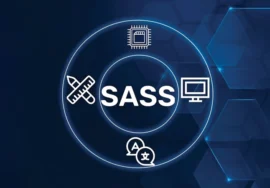
Data Validation and Input Sanitization: Security Best Practices in the Digital Age
The digital age thrives on user interaction. From online purchases and social media engagement to giving feedback and accessing accounts, applications rely on user-supplied data. This constant flow of information presents a challenge: security. Malicious actors are innovating, seeking ways to exploit vulnerabilities and compromise systems. A common target? User-submitted data.
Here’s where data validation and input sanitization step in–powerful tools that act as the first line of defense in safeguarding applications from malicious intent.
Understanding the Powerhouse Duo: Data Validation and Input Sanitization
Data validation ensures that user input adheres to predefined formats and ranges. Think of it as a quality check. Imagine a form requiring a numeric value within a specific range (e.g., age between 18 and 65). Data validation verifies the input is indeed a number and falls within the designated limits.
Input sanitization focuses on removing or neutralizing harmful characters from the data. Just like disinfecting a surface before use, input sanitization eliminates threats before they can cause harm.
By implementing these two practices together, developers can strengthen their application’s security posture. Let’s delve deeper into specific best practices for both data validation and input sanitization.
Data Validation: Best Practices for a Secure Foundation
- Dual Defense: Client-Side and Server-Side Validation. Client-side validation offers a user-friendly experience by providing immediate feedback on invalid input (e.g., “Please enter a valid email discuss”). But, it should never be the sole defense. Server-side validation, implemented on the backend, is crucial to make sure malicious data is filtered before it reaches the core system. This two-pronged approach offers a robust defense.
- Whitelisting vs. Blacklisting: Choosing the Right Approach. A whitelist approach allows only specific characters or formats (e.g., only alphanumeric characters for usernames). A blacklist restricts certain characters (e.g., disallowing special characters in passwords). While both methods have merit, whitelisting is considered more secure, especially for handling sensitive data. By defining what is allowed, the risk of unexpected or malicious characters entering the system is minimized.
- Data and Length Checks: Maintaining Control. Enforcement of data restrictions to prevent unexpected behavior. For example, a quantity field should only accept numbers, not text. Limit input lengths to pre-defined values. This helps prevent buffer overflows, a vulnerability where malicious code can be injected by exceeding the allocated memory space.
Input Sanitization: Safeguarding Against Hidden Threats
- Context-Aware Sanitization: Tailoring the Approach. The sanitization applied should depend on the context in which the data is used. For instance, email addresses must have different sanitization techniques compared to usernames. Understanding the specific use case allows for targeted sanitization, ensuring both security and functionality.
- Regular Expression Matching: A Powerful Tool for Identification. Leverage regular expressions, a specialized syntax for searching and manipulating text, to find and remove unwanted characters or patterns within the input data. Regular expressions offer a powerful and precise way to target specific threats.
- Encoding for Display: Preventing Misinterpretations and Attacks. When displaying user input, encode special characters (e.g., “<” and “>”) to prevent misinterpretation by the browser and potential XSS (Cross-Site Scripting) attacks. Encoding ensures the data is displayed correctly while mitigating the risk of malicious code injection.
Beyond the Basics: Additional Security Measures
Data validation and input sanitization form the cornerstone of secure user input handling. However, a layered approach is crucial in today’s ever-evolving threat landscape. Here are some additional security measures to consider:
- Parameterized Queries: Putting SQL Injection on Lockdown. Prevent SQL injection attacks, where malicious code is disguised as user input within a database query. Implement parameterized queries. These separate SQL statements from user input, with the database engine handling sanitization. This reduces the risk of malicious code execution that could compromise sensitive data.
- Content Security Policy (CSP): Restricting Script Sources. A Content Security Policy (CSP) restricts the sources from which scripts and other content can be loaded. This mitigates the impact of code injection attacks, as unauthorized scripts cannot be executed within the application.
Conclusion: Building a Secure Future with Data Validation and Input Sanitization
Data validation and input sanitization from a solid foundation for secure user input handling. However, in the ever-evolving world of cyber threats, a layered approach is crucial. Here are some additional security measures you can implement to further fortify your application’s defenses:
1. Regular Security Testing and Vulnerability Assessments:
Don’t wait for an attack to discover vulnerabilities. Proactively schedule regular security testing and vulnerability assessments. These involve simulating attacks to identify weaknesses in your application’s security posture. By uncovering potential vulnerabilities early on, you can address them before they are exploited by malicious actors.
2. Secure Coding Practices:
Developers play a vital role in application security. Enforce secure coding practices within your development team. This includes following secure coding guidelines, using well-established libraries and frameworks, and avoiding common coding errors that can introduce vulnerabilities.
3. User Input Logging and Monitoring:
Maintain logs of user input, particularly for sensitive fields. This allows you to monitor for suspicious activity and identify potential attacks in progress. Additionally, consider implementing real-time intrusion detection systems (IDS) that can analyze network traffic for anomalies and potential attacks.
4. Input Rate Limiting:
Prevent brute-force attacks, where attackers attempt to guess login credentials by repeatedly trying different combinations, by implementing input rate limiting. This restricts the number of login attempts a user can make within a specific time frame.
5. Access Control and User Permissions:
Implement a robust access control system that grants users only the minimum privileges required to perform their tasks. This principle of the least privilege minimizes the potential damage if an attacker gains access to a user account.
6. Encryption:
Encrypt sensitive data both in transit (using protocols like HTTPS) and at rest (using strong encryption algorithms). Encryption scrambles data, making it unreadable to unauthorized users even if they manage to intercept it.
7. Secure User Authentication:
Implement strong user authentication practices. Consider using multifactor authentication (MFA), which requires users to provide additional verification factors beyond just a username and password. This significantly increases the difficulty for unauthorized individuals to gain access to user accounts.
8. Regular Software Updates:
Software vendors regularly release updates that address security vulnerabilities discovered in their products. Ensure you have a system in place to promptly apply these updates to your application and its underlying dependencies.
9. Security Awareness Training:
Educate your users about cybersecurity best practices. This includes training them on how to identify phishing attempts, creating strong passwords, and avoiding common social engineering tactics used by attackers. A well-informed user base becomes an essential layer of defense against cyber threats.
10. Incident Response Planning:
No security system is foolproof. Be prepared for the possibility of a security incident. Develop an incident response plan that outlines the steps to be taken in the event of a breach. This plan should include procedures for identifying, containing, eradicating, and recovering from a security incident.
By implementing these additional security measures alongside data validation and input sanitization, you can create a multi-layered defense that significantly strengthens your application’s security posture. Remember, security is an ongoing process. Stay informed about emerging threats, adapt your defenses accordingly, and prioritize continuous improvement to ensure your applications remain secure in the face of ever-evolving cyber threats.





